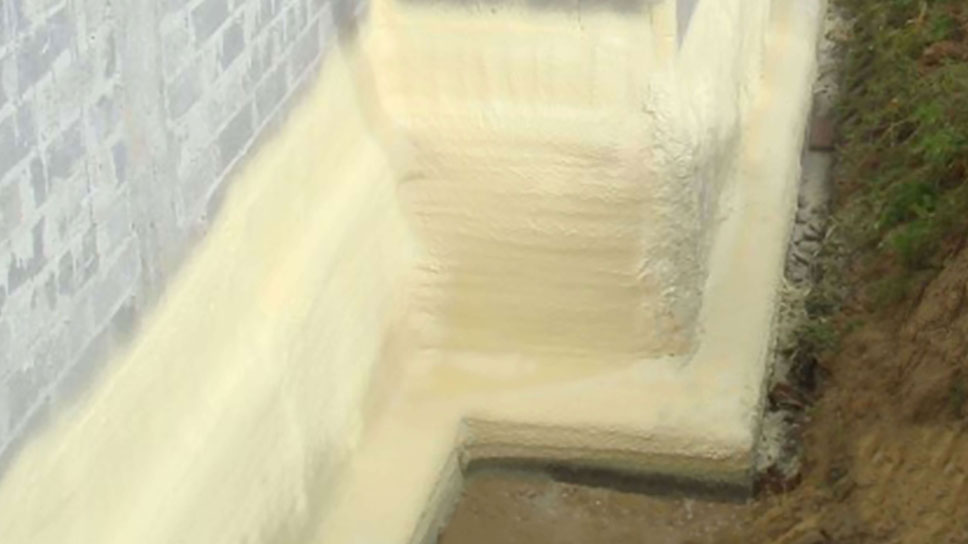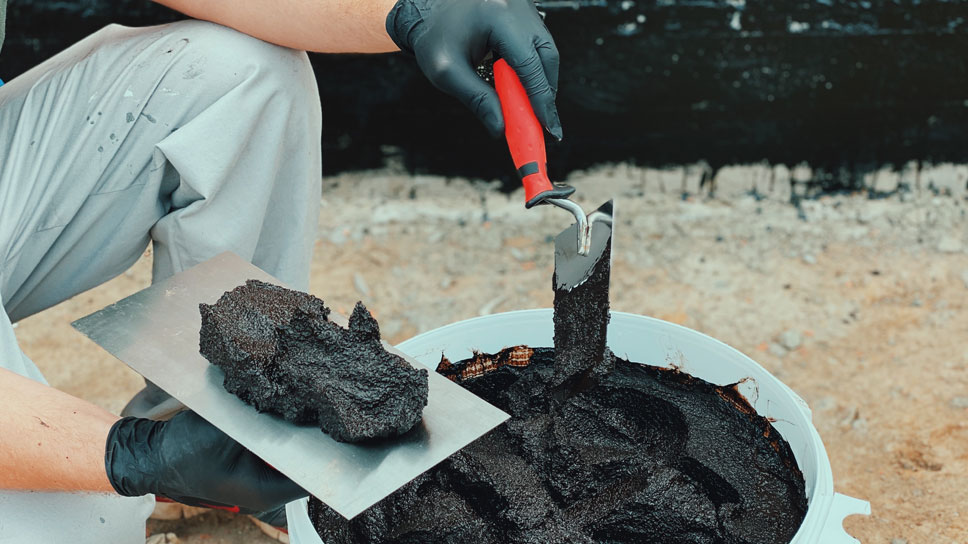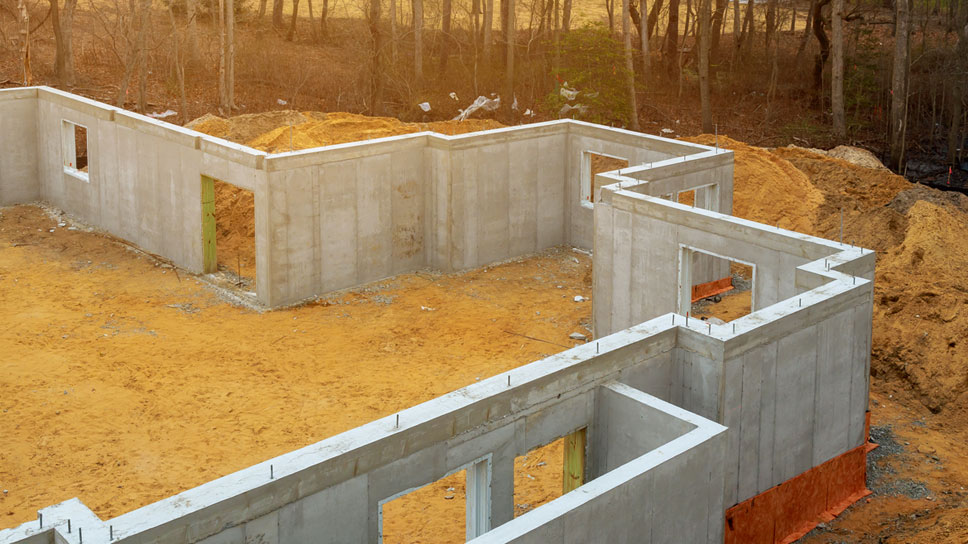Vertical and horizontal waterproofing
Every house, regardless of size or shape, needs to be protected against moisture. The key issue to be checked in the house design is the type of waterproofing. It determines which technological and material solutions may be applied.
Foundation waterproofing can be divided into two basic types. The first one is horizontal insulation. Its purpose is to protect the object against non-pressurised water (mainly rainwater) or against the so-called capillary pull-up (pulling moisture through the walls and transferring it upwards to the building walls).
The other type is vertical waterproofing. It is used to protect the foundations from the ground side. In this case, the insulation layer is laid on the foundation wall and additionally covered with thermal insulation material.

Damp-proofing or waterproofing?
Depending on the function and substrate, a light damp proof course or a medium or heavy damp proof course is installed. The damp proof course protects underground parts of the building against damp soil and is indispensable when the building is erected on permeable soils (e.g. sands and gravels) above the ground water level or when it is located on impermeable soils with permeable soils underneath. On the other hand, water insulation (medium and heavy insulation) is carried out when there is cohesive soil (e.g. clay, dust, clay), in which water may remain near the structure of the building. Water insulation is also necessary in houses erected below the ground water level, as well as when there is a danger of the ground water level periodically rising above the basement floor level.
It is said that it would be best not to design buildings with a basement in areas with a high level of groundwater. Otherwise it will be necessary to provide them with heavy water insulation, i.e. a tight bathtub resistant to ground water pressure, and this is already associated with considerable costs.
Unfortunately, even the most solid water insulation may prove insufficient if the ground water pressure is too high. In such a case, it is necessary to construct a special floor in the basement made of thick concrete slabs so that it is able to balance the water pressure with its mass (there must be 5 cm of concrete for every 10 centimetres of water column). In order to avoid too large a layer of concrete in the basement, you can opt for a thinner but more resistant reinforced concrete slab additionally anchored in the basement walls.
Moisture protection in buildings without cellars
In houses without celars, the foundation walls must be insulated from the inside. Both externally and internally the foundation wall is exposed to contact with ground water or dampness, therefore it is necessary to provide water insulation on both sides.
In buildings without basements, vertical insulation is usually made of 2-3 layers of bitumen or other bituminous compound. To be more precise, in order to ensure the tightness of the cellar, the joints should be sealed with a bituminous sealant with a reinforcing mesh insert. The insulation strip at the joint should be at least 50-60 cm wide.

Thermal insulation equals good waterproofing
In every building, it is very important to have continuity of all insulation layers, both thermal and damp or water insulation. Insulation of foundations with PUR foam allows for elimination of thermal losses by at least 10%; additionally, it has water insulation properties with a very low absorbability coefficient at the level of 0.11kg/m2.
Closed-cell foams are most often used to insulate foundations. Among other things, they enable minimising the problem of freezing, protect against water condensation on the internal walls of the building, eliminate thermal bridges and have excellent waterproofing properties.
Thermal insulation of foundations with the use of PUR foam is recommended to all users of residential buildings, including owners of facilities with heated cellars and foundations made of hollow bricks with a expanded polystyrene insert. It is worth remembering that standard thermal insulation materials will not ensure tight adhesion and precise covering of gaps. Due to spray insulation , it is possible for the PUR foam to penetrate every free space, thus creating an impenetrable barrier against cold and moisture.

 This website uses cookies. By using this website, you consent to the use of cookies in accordance with your browser settings.
This website uses cookies. By using this website, you consent to the use of cookies in accordance with your browser settings.